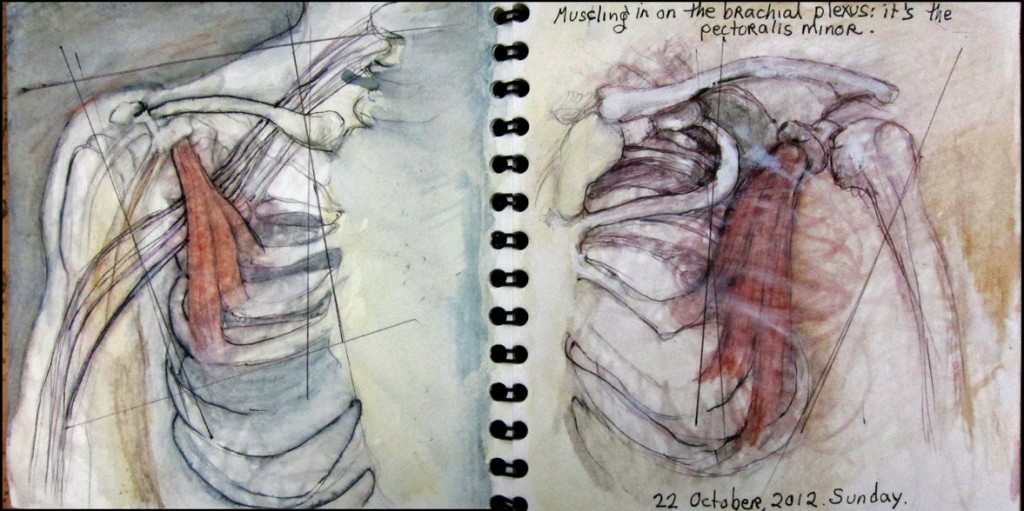 Sketchblog: DayBooks
Sketchblog: DayBooks
There’s a lot of stuff going on in the space beneath the collar bones. Ouch! Nerves entangled with tendons, muscles. Between thought and movement there is a lot of required coordination in the midst of the anatomical unraveling of various elements. And may it (the shoulder) ever unravel, even as it manages to hang together. That’s the dilemma of the shoulder really: hanging together within freedom of motion.
The tissue that can protect can also, quite literally, be the rub. It’s a beautiful, spine-tingling structure, capable of realizing whatever power and grace the brain can envision within the framework of movement. When everything is working in balance and in sequence. But most of us are going to feel, now and then, an interruption in the chain of movement events, even the actual occasional injury, like my current shoulder tenderness and what I think of as unreliability (I don’t know what else to call it).
Simply trying to really look at the layers involved in even the simplest movements is bewildering. Trying to draw some of them is frustrating but fascinating. The bones are pretty discernible, even externally. Some of the muscle tissue is as well — the pectoralis minor is a bit of a challenge because it’s underneath. And that’s the chest musculature that’s next to the nerve: the brachial plexus. Nerves are felt from within and not necessarily in a line or a logic. And of course I like it better when I’m not aware of them. If there have been injuries to an area, there’s generally another element to consider: scar tissue. Tissue that develops as protection during healing — tissue that can then work to constrict and compress.
I suppose there’s always a payoff and there’s always a penalty in each step of the way back from injury. The trick lies in knowing when to play and when to fold.
(ETA: And by the way, I’m posting this from Andalucía, Spain, after a flight across the Atlantic and 3 trains — almost my entire nervous system is talking to me right now.)
